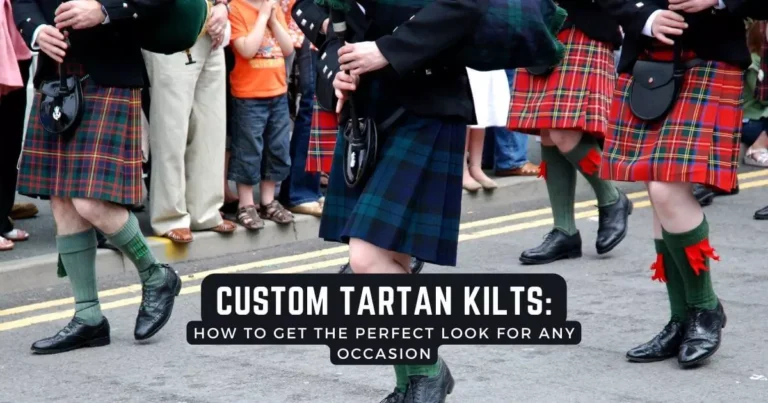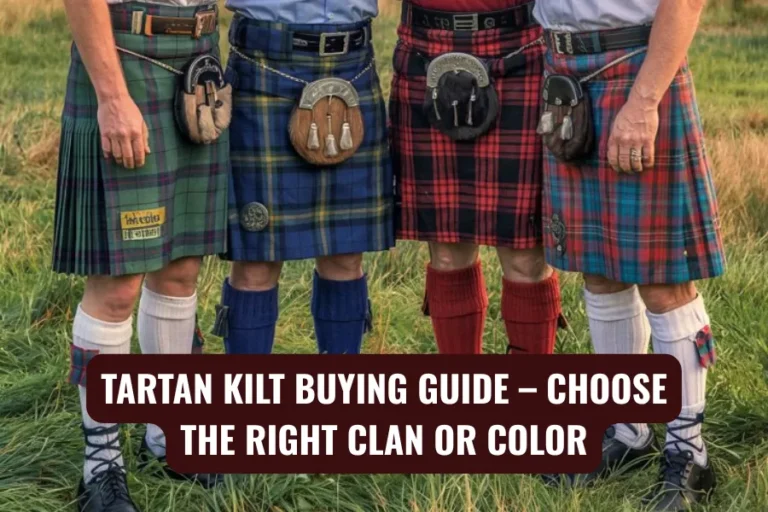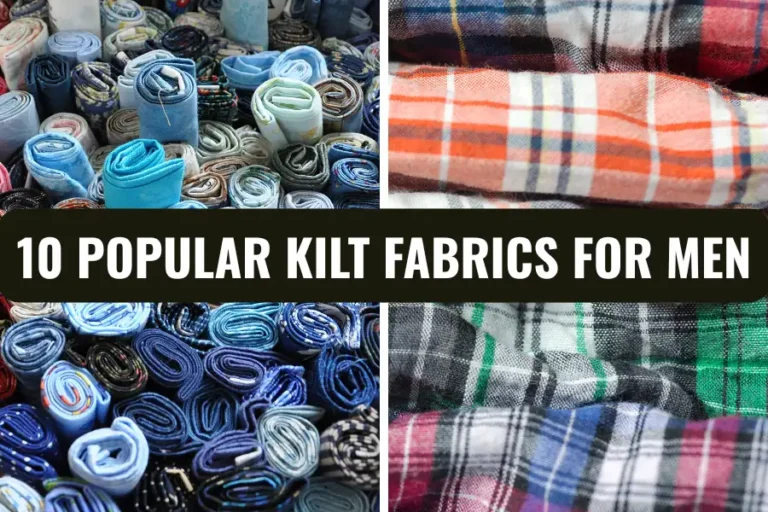What Did The Scottish Wear Before Kilts?
The Scottish kilt is so iconic now that it’s hard to imagine a time before it. That crisp pleating, the weight of the wool, the swing of the fabric as someone walks—it’s practically shorthand for “Scotland.” But the truth is, kilts are a relatively recent chapter in a much longer story.
So, what did the Scots wear before kilts? And, maybe more curiously, when exactly did kilts appear?
The answers are a bit hazy, layered, and not entirely clean-cut. Which—if we’re being honest—makes the whole topic more interesting.
Let’s Start with the Obvious: There Was No “One” Thing
Scotland’s history is long and fragmented, full of shifting tribes, languages, kingdoms, and climates. So the idea that all early Scots wore the same thing? That’s… well, it’s not quite how it worked.
People dressed based on where they lived, what they did, and what they had access to. That sounds obvious, but sometimes we forget that fashion—if we can even call it that—has always been about function first.
In the Highlands, the weather demanded heavier materials. In the Lowlands, life might have looked a bit more like Northern England, which meant different fabrics, different styles.
There wasn’t a single “pre-kilt outfit.” There were many, overlapping and evolving over centuries.
Tunics, Cloaks, and Something Called a Léine
Long before kilts, the go-to garment was something called a léine. It was a loose-fitting shirt or tunic, usually made of linen. Think long—sometimes all the way to the knees or even the shins—and often dyed saffron yellow, at least in earlier periods.
The léine wasn’t unique to Scotland. Variations of it existed in Ireland too (which makes sense, given how closely the Gaelic cultures were connected). It was sometimes belted at the waist, sometimes not. Richer folk might’ve had pleated versions or more finely woven cloth. But overall, it was… basic. Practical. A staple.
Wool cloaks were common too, especially in the Highlands where the weather could turn in an instant. These cloaks—sometimes just large pieces of fabric—could be wrapped, pinned, or draped depending on the conditions or the occasion.
They weren’t always elegant, but they got the job done. Warmth mattered more than symmetry.
Breeches? Maybe. Maybe Not.
Here’s where things get murky. Did early Scots wear trousers or breeches?
Sometimes, yes. But not always.
Roman accounts of Caledonian warriors describe them as bare-legged and wild-haired—sometimes even nude from the waist up, which, to be honest, might say more about Roman propaganda than Scottish fashion.
Still, for many Highlanders, especially during rougher weather or in rugged terrain, a full leg covering just wasn’t the default. Some wore tight-fitting trews (a kind of early trousers), often tucked into boots or strapped with leather. Others, especially warriors, may have chosen mobility over modesty.
It wasn’t one-size-fits-all. Not even close.
Enter: The Great Kilt (Sort Of)
So how did we get from tunics and cloaks to kilts?
Well, the first version of what we now call the “kilt” probably emerged around the late 16th or early 17th century. But it wasn’t the tailored, sharply pleated garment we know today.
It was called the féileadh mòr—or the great kilt. This was essentially a long, wide piece of woolen fabric (often around five yards or more) that could be wrapped around the lower body and then gathered over the shoulder or even pulled up over the head if the weather turned.
It wasn’t sewn into shape. You laid it out on the ground, pleated it by hand, lay down on it, and belted it around your waist. And yes, that sounds like a process. Because it was.
But the idea was simple: you had one piece of fabric that could be clothing, blanket, shelter, even a bag if you needed it. It was clever. Adaptable.
Still, calling it a “kilt” as we think of kilts now? That’s a bit of a stretch.
The Little Kilt: A More Familiar Look:
What most people recognize today—the shorter, sewn, pleated kilt—didn’t really appear until the 18th century. And, ironically, it wasn’t necessarily invented by a Highland Scot.
A man named Thomas Rawlinson, an English industrialist working in the Highlands, is sometimes credited with modifying the great kilt into a more practical, manageable garment for his workers. He removed the top half—the part that would normally drape over the shoulder—keeping just the pleated skirt.
Whether Rawlinson “invented” the modern kilt or just popularized it is debated. But the simplified version caught on. It was easier to wear. Easier to work in.
And eventually, it became part of Highland identity. Then Scottish identity. And finally, a kind of global symbol.
Funny how something practical can end up ceremonial.
So, Why Does This Matter?
I think, for some of us, there’s a kind of comfort in imagining that traditional dress has always been the same. That what we see today—a Highland bagpiper in full tartan regalia, for instance—is ancient, unchanged. But it’s not.
That doesn’t make it less meaningful. If anything, it adds depth. Because knowing that kilts evolved—slowly, from linen shirts and wool cloaks to something more structured—makes them feel more real. Less like a costume, more like clothing that grew out of necessity and pride.
And it also helps explain why the idea of “traditional” Scottish dress can be flexible. Some people wear kilts with hiking boots. Others stick to full Prince Charlie jackets and brogues. Some still wear trews. Some just wear jeans with a tartan scarf.
It’s not about getting it historically “right.” It’s about participating in a living tradition. One that, clearly, didn’t spring up overnight.
Final Thoughts:
So—what did the Scots wear before kilts?
Layers of linen and wool. Tunics. Cloaks. Sometimes trousers, sometimes not. And eventually, something that looked a bit like a kilt, long before it was called that.
It was practical. Sometimes rugged. Sometimes elegant, in its own way. But it wasn’t fixed. And honestly, that makes the story richer.
Because, like most cultures, what Scots wore before kilts was shaped by need, place, weather, and time. And really, isn’t that how all style begins?








